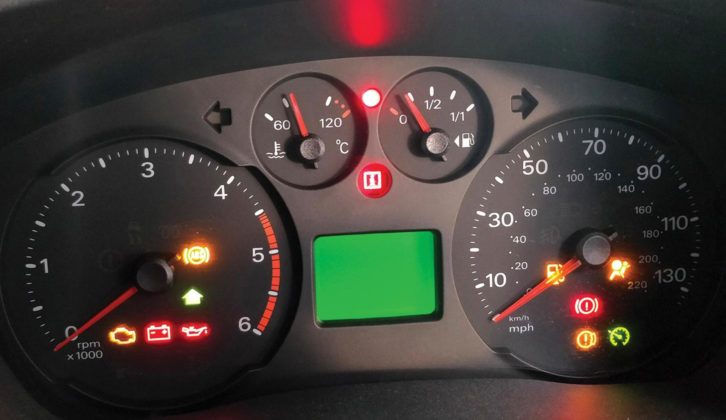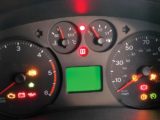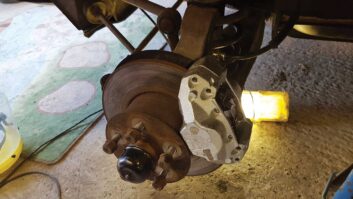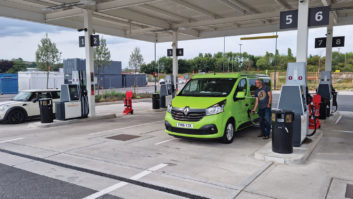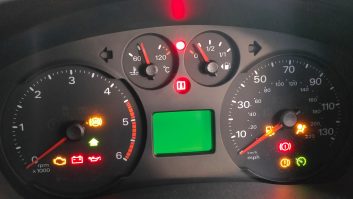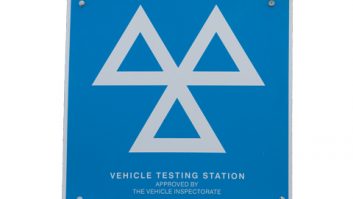Many years ago, when I started working in the motor industry, we only had to deal with a handful of warning lamps on the instrument panel. These days, a motorhome dashboard is littered with a whole host of warning lights.
So how can a driver know what they all mean? The first step is to look at the colour of any lamp that lights up on the dashboard.
All instrument panel warning lamps are colour coded: red means stop, and amber means there is a possible problem that might or might not be serious, but could become serious if ignored. Any other colour means that the lamp is just used for providing useful information.
I frequently see motorhome owners posting on various internet forums that a lamp has lit up on the dash, but everything seems to be fine, so they have just carried on – but they would still like to know what the problem might be.
This is a very risky strategy, because the problem that has caused the light to come on might actually be causing further damage.
Plug it in
It is almost impossible to tell what caused the lamp to light up without plugging in a diagnostic machine of some sort, so asking what might be the cause of the light coming on is going to be pretty much a waste of time.
To put it simply, if you see a red light on your motorhome’s dashboard, you should stop, and immediately if it’s safe to do so.
Red warning lights mean something is wrong that is likely to cause further damage if ignored, or that is a potential hazard.
Examples of this would be the low oil pressure light or the low brake fluid light.
Seeing amber?
Amber lights are warnings of faults that might become more serious if not dealt with soon.
Examples of these would include problems such as ABS or stability control system faults, engine management issues, or a blocked diesel particulate filter (DPF).
If one of these illuminates, you should be safe to go on with your journey (perhaps at reduced speed), but the problem needs sorting out at the earliest opportunity.
Ignoring a DPF warning light, for example, could mean eventually having to replace the DPF, at high cost, rather than getting it cleared relatively cheaply.
Read your handbook
If you don’t know what the dashboard warning lamps mean, start by checking your handbook. It will tell you what the light signifies and then you can take appropriate action – that might involve checking your lights, or booking the motorhome in for a diagnostic check.
Look out for the engine light
Engine management lights could mean any one of a dozen or more possible faults, some of which could cause long-term or even terminal engine damage if not dealt with quickly.
This is an amber light, so you will be safe to continue your journey, but do get the problem checked as soon as possible.
There are numerous possible causes for this lamp to light up, ranging from a blocked air filter to a jumped timing belt or chain.
A diagnostic code reader will help to identify the problem, but it is rarely as simple as reading a code to precisely diagnose the fault.
As an example, a code for the lambda sensor in the exhaust might mean several things. The lambda sensor measures oxygen content in the exhaust and from that, the ECU can adjust the fuel injection to maintain the correct mixture control. It could be that the sensor is faulty, but the air filter might be blocked, causing insufficient air flow.
Alternatively the mass air flow sensor might be faulty, causing the ECU to inject incorrect fuel quantities – that in turn could cause the engine to run hotter or generate more soot, which could then block the DPF.
Modern engines run crank and cam sensors to enable precise timing of fuel-injection events.
- If you’re after more great tips, be sure to take a look at our guide to motorhome security, where we share our advice on keeping your ‘van safe
Future Publishing Limited, the publisher of practicalmotorhome.com, provides the information in this article in good faith and makes no representation as to its completeness or accuracy. Individuals carrying out the instructions do so at their own risk and must exercise their independent judgement in determining the appropriateness of the advice to their circumstances. Individuals should take appropriate safety precautions and be aware of the risk of electrocution when dealing with electrical products. To the fullest extent permitted by law, neither Future nor its employees or agents shall have any liability in connection with the use of this information. You should check that any van warranty will not be affected before proceeding with DIY projects.
If you’ve enjoyed reading this article, why not get the latest news, reviews and features delivered direct to your door or inbox every month. Take advantage of our brilliant Practical Motorhome magazine SUBSCRIBERS’ OFFER and SIGN UP TO OUR NEWSLETTER for regular weekly updates on all things caravan related.
If you see a red light on your motorhome’s dashboard, you should stop, and immediately if it’s safe to do so
